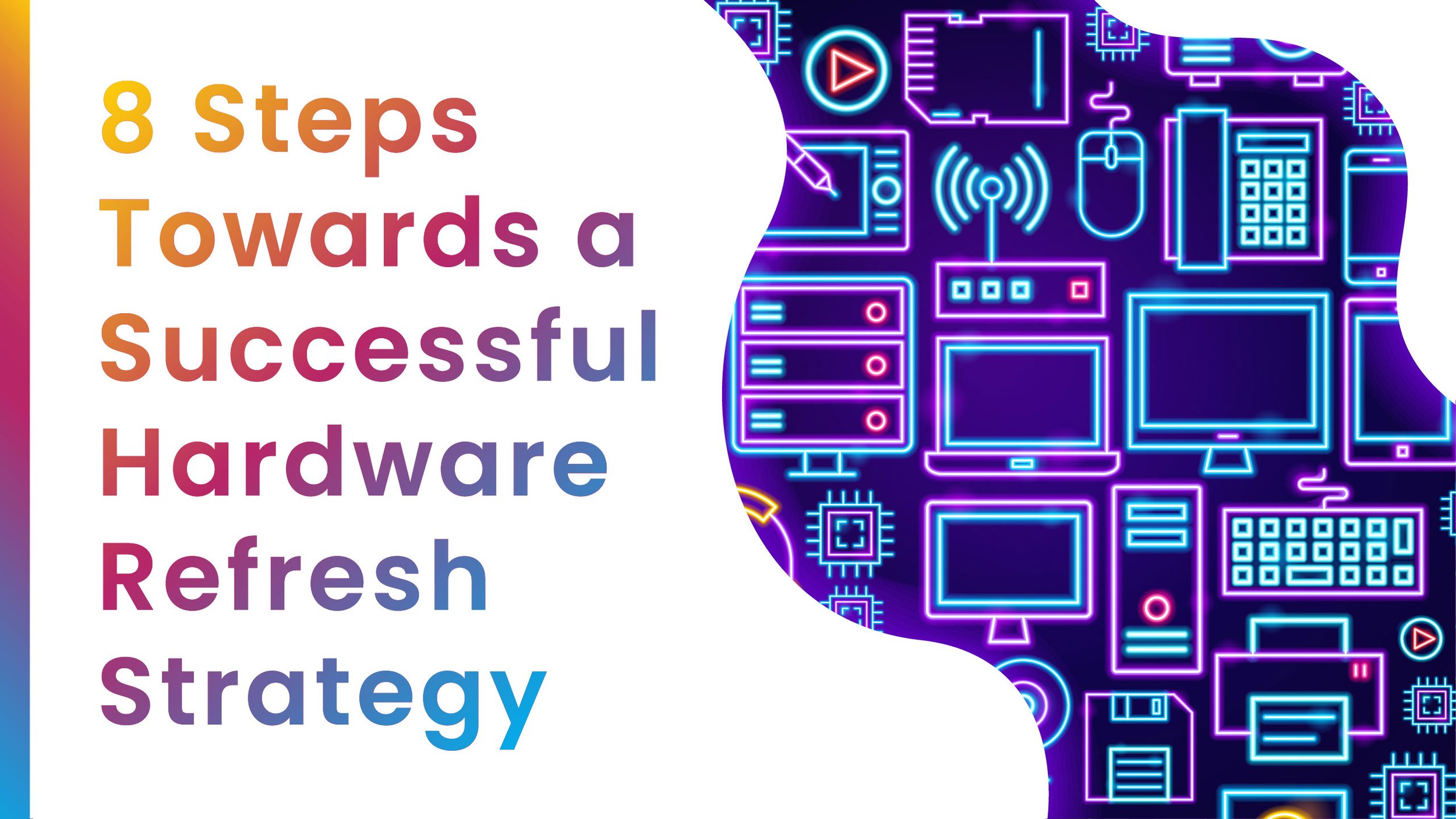8 Steps Towards a Successful Hardware Refresh Strategy
Every business, no matter the sector or scale, utilises hardware in their day-to-day operations, so employing and maintaining the correct hardware for the job is an ongoing process that is vital to your business’s success.
In our blog this month we will be looking at technology refresh best practices; how to choose the right products, the pitfalls of unsuitable or outdated technology and how to create a Hardware Strategy to ensure your hardware products are always optimised for your business needs.
“45% of total unplanned downtime is caused by hardware failures.”
- EMC Global Data Protection Index Survey
Why It's Important to Invest in the Right Hardware
Do you start your workday by turning on the computer then going to make a cup of coffee while you wait for it to start up? Do you have that one barcode reader that needs to be held at a very specific angle to scan? Is there only one person in the office who knows how to get the printer to work properly? These may all seem like harmless quirks but, at best, dodgy hardware reduces the efficiency of your business, at worst, a hardware failure can grind your business to a halt. Knowledge of technology refresh best practices is essential for success when considering a hardware refresh strategy.
The right hardware solutions can help you stay one step ahead of your competition but there are many factors to consider in ensuring your hardware remains optimised, such as cost, suitability, integration and lifespan of the product. Getting it wrong can be costly and the number of solutions and manufacturers available can make choosing the best products seem like a daunting task.
A Hardware Refresh Strategy is a continual process of assessing your current suite of IT computer hardware, future needs and contingencies in case of obsolescence or failure. Many companies don’t understand best practice, or have the internal skill or resources to take on this task, which is where a hardware specialist who is familiar with how a technology refresh strategy is implemented can help.
The Keys to
Hardware Success
No matter what size or type of business you operate, your staff interfaces with your software systems using some type of hardware. The efficacy of that hardware, along with considerations for web design, can have a direct effect on your business’s success.
Retailers’ considerations for hardware range from shop floor displays to back-office computers to warehouse PDAs. Whether you have a traditional cash wrap with all the related POS peripherals, such as a display screen, touch screen, cash drawer, receipt printer and payment card reader, or a more mobile staff presence with handheld terminals that can do everything.
Office-based businesses rely on PCs or laptops, printers, copiers and telephones (landline, mobile or VoIP) as well as all the routers, switches, servers and cables that come with them. In addition, with the current shift towards remote working, such devices are increasingly required to perform securely and reliably from multiple locations.
Here we look at best practice when conducting a technology audit and the 8 steps to consider when planning a Hardware Project:
“Be it software, hardware, technical or support Pinnaca have you covered.”
Hardware Refresh Strategic Plan
Partner with Pinnaca to take care of your Hardware Refresh Strategy. We offer a one stop shop to procure, secure and support your hardware requirements every step of the way. Our experienced team will assess your business needs to find the solution that’s best for you and your budget, even if that means sticking with what you’ve already got, (we’ll never sell you something you don’t need).
Our IT expertise means you can be confident that any hardware solution will be fully compatible with all your business systems. We can assist with installation, training and support to ensure minimal disruption to your business during initial setup and beyond.
Pinnaca’s dedicated procurement specialist has working relationships with all the top hardware manufacturers. As we partner with many satisfied customers, we benefit from greater negotiating power and economies of scale to ensure the best deals. We can offer assistance with capital cost planning and can supply real time price and lead time insights to further help you plan and budget your hardware solutions.
Refresh, Upgrade or Maintain your Hardware?
Save money, take the Hardware Challenge!
Simply click on a button below to see how much we can save you.
We'll then contact you with our cost-saving suggestions.











